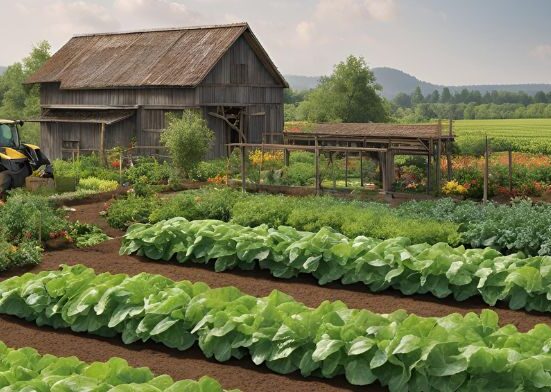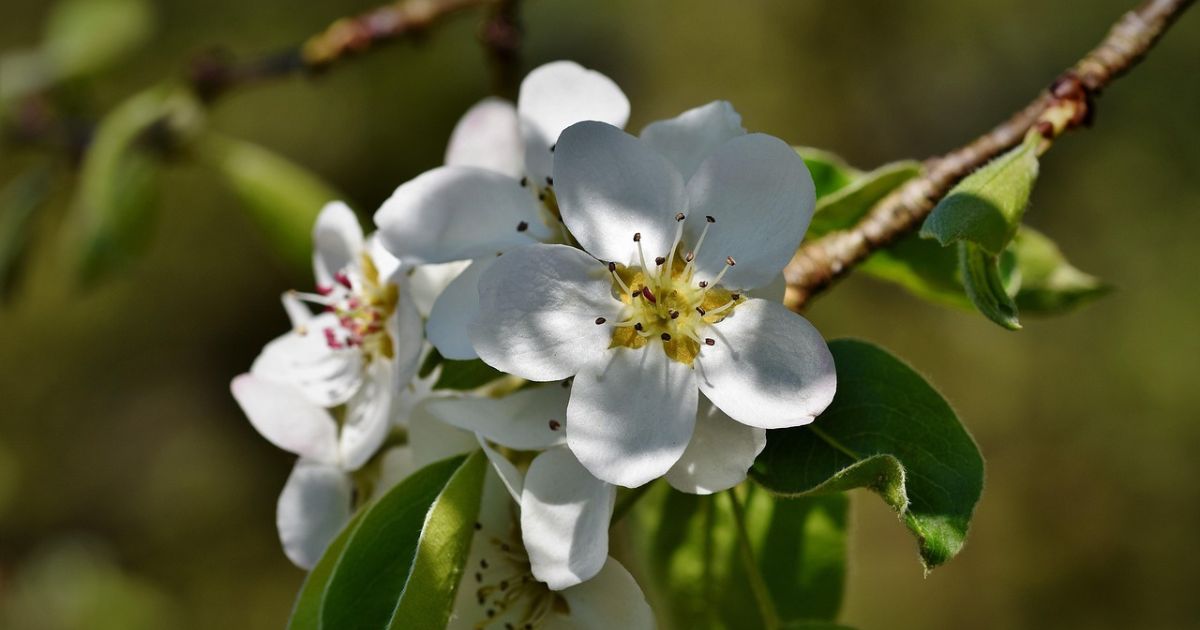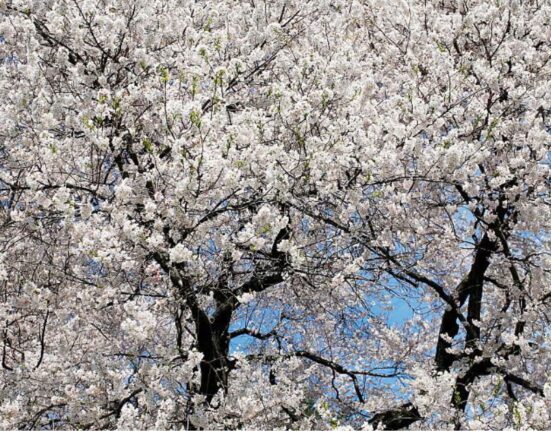As winter’s chill fades and the first signs of spring emerge, few sights are as breathtaking as the delicate white blossoms of early spring flowering trees. These trees, bursting into bloom with clouds of white flowers, signal renewal and hope, transforming landscapes into ethereal displays of elegance. In this blog post, we explore the beauty, significance, and practical considerations of early spring white flowering trees, delving into their varieties, care, ecological roles, and aesthetic appeal. Whether you’re a gardener, a nature enthusiast, or simply someone who appreciates seasonal splendor, this guide will inspire you to celebrate these magnificent trees.
The Allure of Early Spring White Flowering Trees
Early spring is a time of transition, and white flowering trees play a starring role in this seasonal shift. Their pristine blooms, often appearing before leaves fully unfurl, create a striking contrast against bare branches or emerging greenery. White flowers symbolize purity, new beginnings, and serenity, making them a favorite in gardens, parks, and urban landscapes. These trees not only enhance visual appeal but also provide ecological benefits, such as supporting pollinators and adding structure to trees with white blossom landscapes.
The fleeting nature of their blooms—often lasting just a few weeks—adds to their charm. This ephemeral beauty encourages us to pause and appreciate the moment, a reminder of nature’s cycles. From the delicate petals of flowering dogwoods to the frothy clusters of serviceberries, these trees offer a range of textures and forms that captivate the senses.
Popular Varieties of Early Spring White Flowering Trees
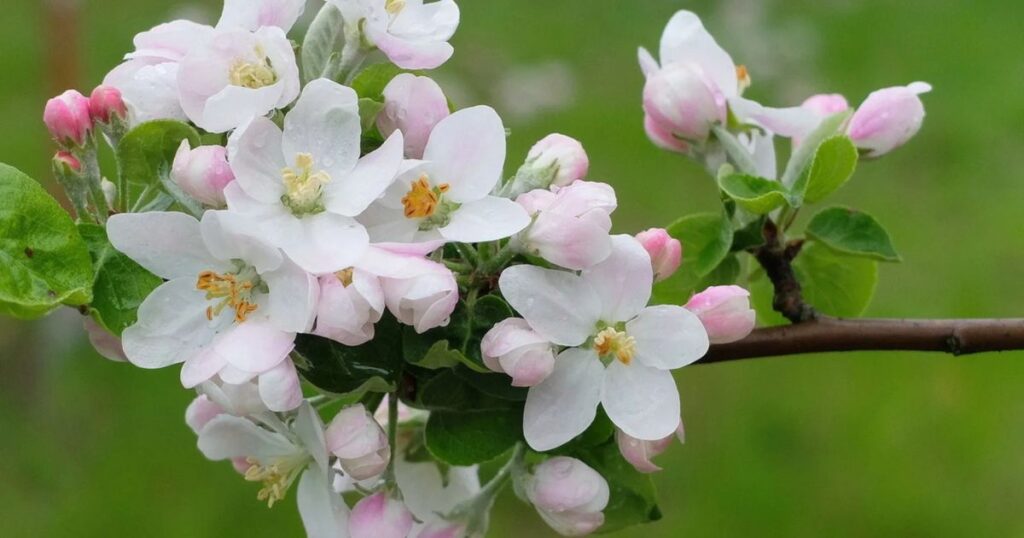 Early spring white flowering trees bring a touch of elegance and freshness to gardens and landscapes. Popular varieties include the dogwood, known for its star-shaped white blooms that brighten yards; serviceberry, offering delicate flowers alongside edible berries; and the pear tree, whose fragrant white blossoms herald the arrival of spring.
Early spring white flowering trees bring a touch of elegance and freshness to gardens and landscapes. Popular varieties include the dogwood, known for its star-shaped white blooms that brighten yards; serviceberry, offering delicate flowers alongside edible berries; and the pear tree, whose fragrant white blossoms herald the arrival of spring.
Other favorites are the cherry blossom, celebrated for its stunning floral display, and the magnolia, with large, creamy-white flowers that exude charm and sophistication. These trees not only enhance curb appeal but also attract pollinators like bees and butterflies. Hardy, versatile, and visually striking, early spring white flowering trees are perfect for adding seasonal beauty, light, and life to any outdoor space.
Flowering Dogwood (Cornus florida)
The flowering dogwood is an iconic choice for early spring landscapes, particularly in North America. Its white (or sometimes pink) bracts surround tiny yellow-green flowers, creating a stunning display in April or May. Dogwoods thrive in partial shade and well-drained soil, making them versatile for woodland gardens or suburban white flowering trees identification yards.
- Height: 15–30 feet
- Bloom Time: Early to mid-spring
- Notable Features: Vibrant fall foliage, red berries that attract birds
- Care Tips: Plant in slightly acidic soil and avoid overwatering to prevent root rot.
Serviceberry (Amelanchier spp.)
Serviceberries, also known as Juneberries or shadbush, are beloved for their airy white blossoms and edible berries. These small trees or large shrubs bloom early, often in March or April, and are native to North America. Their delicate flowers give way to sweet, blueberry-like fruits that are a favorite of both wildlife and humans.
- Height: 10–25 feet
- Bloom Time: Early spring
- Notable Features: Edible berries, brilliant fall color
- Care Tips: Tolerant of various soils but prefers moist, well-drained conditions.
Star Magnolia (Magnolia stellata)
Star magnolias are compact, elegant trees with star-shaped white flowers that bloom profusely in early spring, sometimes as early as February in milder climates. Their fragrant blossoms and petite size make them ideal for small gardens or as ornamental focal points.
- Height: 10–20 feet
- Bloom Time: Late winter to early spring
- Notable Features: Fragrant flowers, compact growth
- Care Tips: Plant in full sun to partial shade and protect from late frosts, which can damage buds.
Crabapple (Malus spp.)
While crabapples are known for a range of flower colors, many cultivars, such as Malus ‘Snowdrift’ or Malus ‘Adirondack,’ produce stunning white blooms in early spring. These trees are valued for their flowers, fruit, and adaptability to various climates.
- Height: 15–25 feet
- Bloom Time: Early to mid spring
- Notable Features: Ornamental fruit, disease-resistant cultivars available
- Care Tips: Choose disease-resistant varieties to minimize maintenance, and prune to maintain shape.
Hawthorn (Crataegus spp.)
Hawthorns are hardy trees with clusters of white flowers that resemble apple blossoms. They bloom in late spring, slightly later than other early bloomers, and produce red berries that persist into fall. Their thorny branches add a layer of natural protection.
- Height: 15–30 feet
- Bloom Time: Late spring
- Notable Features: Berries for wildlife, thorny branches
- Care Tips: Plant in full sun and prune to control size and shape.
Yoshino Cherry (Prunus x yedoensis)
The Yoshino cherry, famous for its role in Washington, D.C.’s cherry blossom festival, produces masses of pale pink to white flowers in early spring. Its graceful form and fleeting blooms make it a showstopper in any landscape.
- Height: 20–40 feet
- Bloom Time: Early spring
- Notable Features: Iconic spring display, elegant branching
- Care Tips: Plant in well-drained soil and avoid heavy pruning during bloom season.
Ecological and Practical Benefits
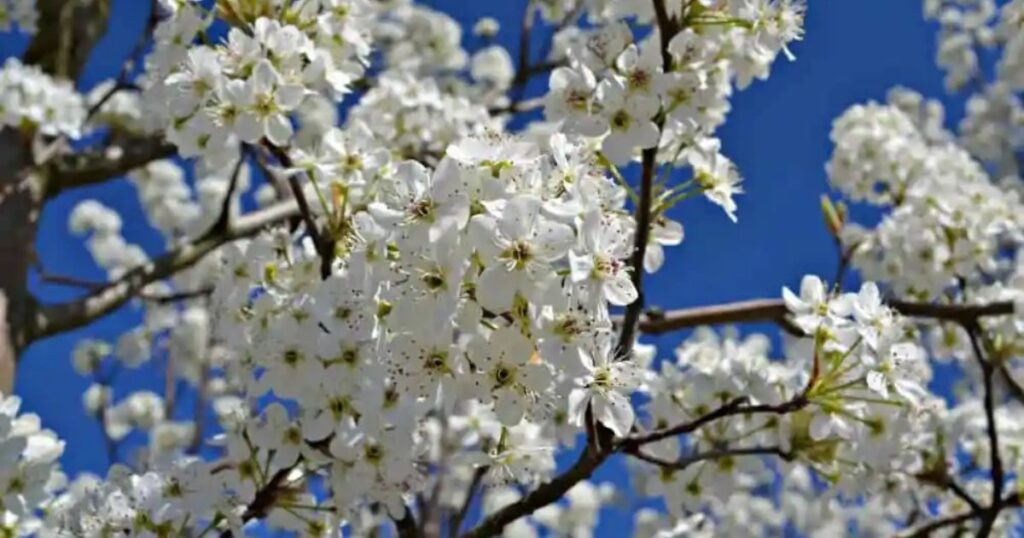 Ecological and practical benefits go hand in hand, shaping a balanced relationship between nature and human needs. Ecologically, they support biodiversity, improve soil health, and reduce pollution by encouraging sustainable practices. For instance, planting trees and crops wisely helps regulate the climate, conserve water, and provide habitats for wildlife.
Ecological and practical benefits go hand in hand, shaping a balanced relationship between nature and human needs. Ecologically, they support biodiversity, improve soil health, and reduce pollution by encouraging sustainable practices. For instance, planting trees and crops wisely helps regulate the climate, conserve water, and provide habitats for wildlife.
On the practical side, these benefits enhance everyday life by lowering energy costs, improving food security, and creating healthier living environments. Using eco-friendly methods in farming, gardening, or resource management often leads to long-term savings and greater resilience against environmental challenges. Together, these benefits show how caring for the planet directly contributes to human well-being, efficiency, and a more sustainable future.
Supporting Pollinators
Early spring blooms provide critical nectar and pollen for bees, butterflies, and other pollinators emerging from winter dormancy. Species like serviceberries and crabapples are beautiful to native bees, helping to sustain local ecosystems.
Wildlife Habitat
Many of these trees produce fruits or berries that feed birds and small mammals. For example, dogwood berries are a favorite of songbirds, while hawthorn berries support wildlife through fall and winter.
Erosion Control and Shade
With their extensive root systems, trees like hawthorns and serviceberries help stabilize soil on slopes or near water bodies. Their canopies also provide shade, reducing urban heat and creating comfortable outdoor spring flower tree spaces.
Aesthetic Versatility
White flowering trees are incredibly versatile, fitting into various garden styles, from formal to naturalistic. Their neutral blooms complement any color palette, making them ideal for mixed borders, specimen plantings, or urban trees with white blooms streets capes.
Designing with White Flowering Trees
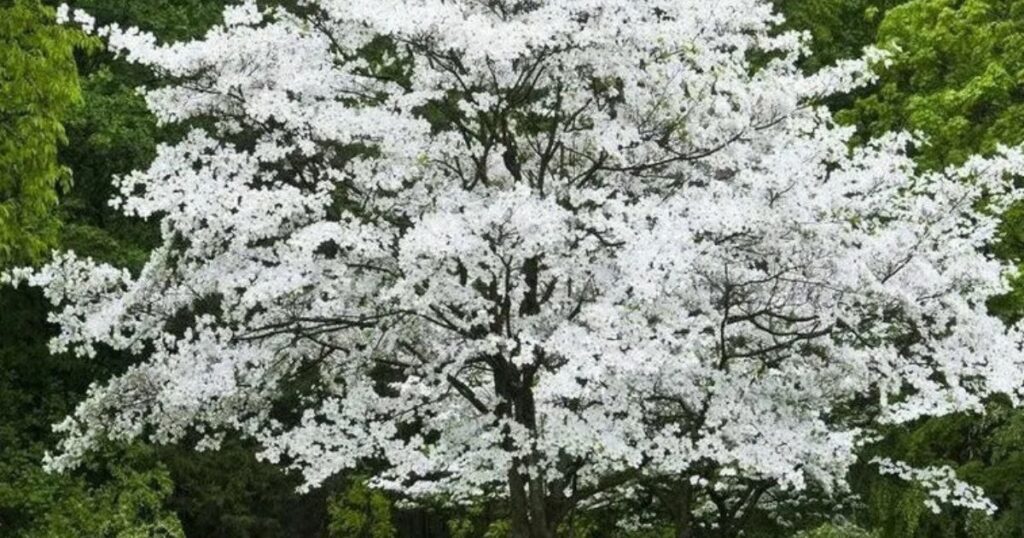 White flowering trees bring timeless elegance and natural beauty to any landscape design. Their soft blossoms create a sense of purity and calm, making them perfect for gardens, walkways, and entryways. In early spring, these trees provide a stunning contrast against fresh greenery, while in summer, they add shade and charm. Popular choices like dogwood, magnolia, and cherry varieties offer seasonal interest with both flowers and foliage.
White flowering trees bring timeless elegance and natural beauty to any landscape design. Their soft blossoms create a sense of purity and calm, making them perfect for gardens, walkways, and entryways. In early spring, these trees provide a stunning contrast against fresh greenery, while in summer, they add shade and charm. Popular choices like dogwood, magnolia, and cherry varieties offer seasonal interest with both flowers and foliage.
When thoughtfully placed, white flowering trees can highlight focal points, frame outdoor spaces, or line pathways for a graceful effect. Blending them with colorful plants or evergreens enhances visual balance, creating landscapes that feel both trees with white blossoms in early spring serene and inviting, whether in modern or traditional garden designs.
Create Focal Points
Use a single star magnolia or flowering dogwood as a specimen tree in a front yard or courtyard. Their compact size and striking blooms draw the eye without overwhelming the space. Pair early spring bloomers with plants that shine in other seasons for year-round interest. For example, plant dogwoods alongside springtime trees blossom evergreens or late-blooming perennials to ensure continuous color and texture.
Group for Impact
Planting multiple trees of the same species, such as Yoshino cherries or serviceberries, creates a dramatic effect, especially in larger landscapes or parks. Their synchronized blooms can transform a space into a sea of springtime trees white.
Consider Scale and Space
Choose trees that fit your available space. Star magnolias and serviceberries are ideal for small gardens, while Yoshino cherries or larger crabapples suit expansive yards or public spaces.
Account for Maintenance
Some trees, like crabapples, require regular pruning to maintain shape and trees with white blooms in early spring prevent disease. Others, like dogwoods, are relatively low-maintenance but may need protection from pests like trees with white blooms in early spring anthracnose.
Care and Maintenance
Planting
- Timing: Plant in early spring or fall to allow roots to establish before extreme weather.
- Site Selection: Most prefer full sun to partial shade and well-drained soil. Check specific requirements for each species.
- Soil Preparation: Amend soil with organic matter to improve drainage and fertility.
Watering
- Young trees need regular watering, especially during their first two years. Water deeply but infrequently to encourage deep root growth.
- Established trees are generally drought-tolerant but benefit from occasional deep watering during dry spells.
Pruning
- Prune in late winter or early spring before blooms form to remove dead or crossing branches.
- Avoid heavy pruning during bloom season to preserve flowers.
Pest and Disease Management
- Monitor for common issues like powdery mildew (dogwoods), fire blight (crabapples), or scale insects.
- Choose disease-resistant cultivars and maintain good air circulation through proper pruning.
Fertilizing
- Apply a balanced, slow-release fertilizer in early spring to support growth and blooming.
- Avoid over-fertilizing, which can lead to excessive foliage at the expense of flowers.
Cultural and Historical Significance
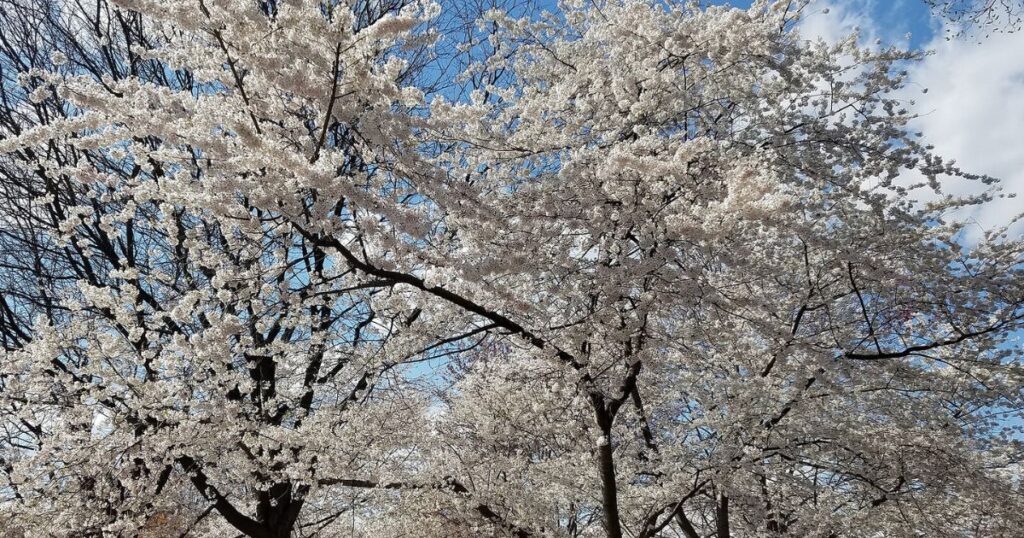 White flowering trees hold deep cultural and historical meaning across the globe. In Japan, cherry blossoms, including Yoshino cherries, symbolize the transient nature of life, celebrated during Hanami festivals. In North America, dogwoods are steeped in folklore, with their bracts said to represent the cross in Christian symbolism. Hawthorns, revered in European traditions, are associated with protection and fertility, often planted near sacred flowering white tree sites.
White flowering trees hold deep cultural and historical meaning across the globe. In Japan, cherry blossoms, including Yoshino cherries, symbolize the transient nature of life, celebrated during Hanami festivals. In North America, dogwoods are steeped in folklore, with their bracts said to represent the cross in Christian symbolism. Hawthorns, revered in European traditions, are associated with protection and fertility, often planted near sacred flowering white tree sites.
These trees also play a role in modern traditions. The National Cherry Blossom Festival in Washington, D.C., commemorates the gift of cherry trees from Japan in 1912, symbolizing friendship between nations. Similarly, community plantings of serviceberries or crabapples reflect a growing appreciation for native and edible landscapes.
Challenges and Considerations
While white flowering trees are stunning, they come with challenges:
- Short Bloom Period: Most bloom for only 1–3 weeks, so plan for complementary plants to maintain interest.
- Weather Sensitivity: Late frosts can damage buds, especially for early bloomers like star magnolias. Consider microclimates or protective measures in colder regions.
- Pest Susceptibility: Some species, like dogwoods, are prone to fungal diseases in humid climates. Regular monitoring and proper care can mitigate risks.
- Space Constraints: Larger trees like Yoshino cherries may not suit small urban gardens. Opt for compact varieties like star magnolias for limited spaces.
Inspiring Examples from Around the World
“Inspiring Examples from Around the World” showcases remarkable stories, innovations, and achievements that motivate and uplift. From groundbreaking social initiatives to extraordinary acts of courage and creativity, this collection highlights how individuals and communities across continents are making a positive impact.
Readers will discover lessons in resilience, ingenuity, and compassion, drawing inspiration from diverse cultures, industries, and lifestyles. Each example serves as a reminder that change is possible, no matter the scale, and that human potential knows no bounds. Perfect for educators, leaders, or anyone seeking motivation, this compilation sparks curiosity, encourages action, and celebrates the incredible ways people worldwide are shaping a brighter, more hopeful future.
Washington, D.C.’s Tidal Basin
The Yoshino cherry trees around the Tidal Basin are a global icon, drawing millions of visitors each spring. Their white-pink blooms create a dreamlike scene, showcasing the power of mass plantings.
Japanese Gardens
Star magnolias and other white-flowered trees are staples in Japanese gardens, where their simplicity and elegance embody wabi-sabi aesthetics. These gardens emphasize harmony and balance, with trees carefully placed to frame views.
Native American Landscapes
Serviceberries, deeply rooted in Native American culture, are often planted in restoration projects or edible landscapes. Their early blooms and berries connect modern gardeners to indigenous traditions.
Conclusion
Early spring white flowering trees are more than just seasonal spectacles; they are symbols of renewal, ecological anchors, and design powerhouses. From the delicate star magnolia to the stately Yoshino cherry, these trees offer beauty, functionality, and cultural resonance. By selecting the right species, providing proper care, and integrating them thoughtfully into your landscape, you can create a springtime display that inspires awe and fosters a deeper connection to nature.
Whether you’re planting a single dogwood in your backyard or designing a park with rows of crabapples, these trees invite us to celebrate the fleeting beauty of early spring. So, as the first buds swell and petals unfurl, take a moment to appreciate the elegance of these seasonal blooms—a reminder that even in the quiet transition from winter to spring, nature offers moments of profound beauty.
FAQ:
What are Early Spring white Flowering Trees?
Early spring white flowering trees are deciduous or ornamental trees that bloom with white flowers at the start of spring, often before their leaves fully emerge. They brighten landscapes with striking blooms after winter.
Why Choose white Flowering Trees for Early Spring?
White blooms create a fresh, clean look in gardens and landscapes. They can contrast beautifully with remaining winter greenery or early spring foliage and attract pollinators like bees.
When do these Trees Typically Bloom?
Bloom time varies by species, but generally, early spring white flowering trees bloom between late February and April, depending on climate and local weather patterns.
Are these Trees Suitable for small Gardens?
Yes, many varieties, like star magnolias and dogwoods, remain small to medium-sized, making them perfect for limited spaces or as focal points in a garden.
Do white Flowering Trees Attract Wildlife?
Yes, they attract bees, butterflies, and sometimes birds. The flowers provide nectar early in the season, and some species produce berries later in the year.




